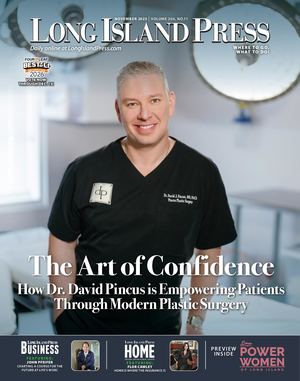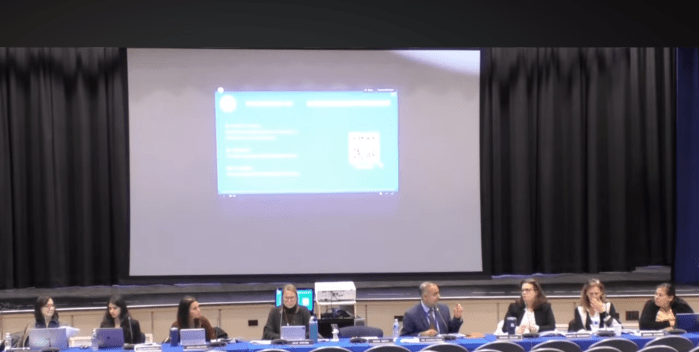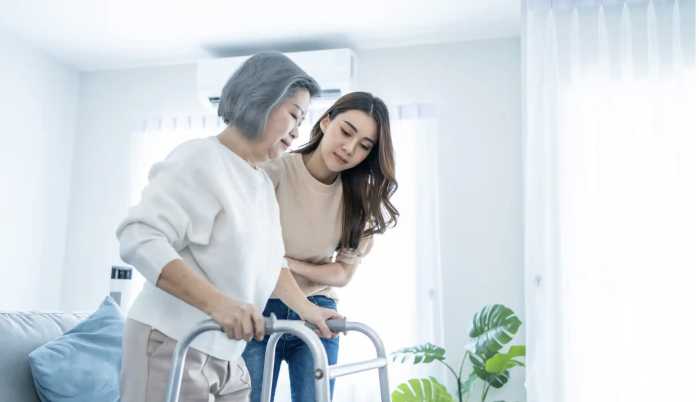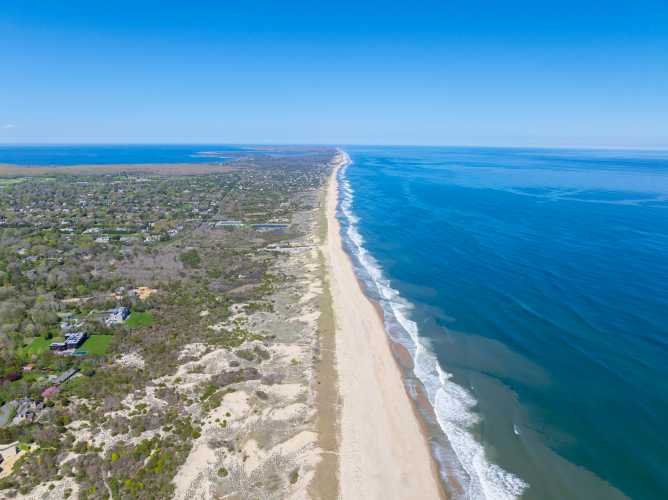For an entrance named after two people who spent their lives proving nothing is impossible, it felt fitting that the brand-new Walters–Smithdas Legacy Atrium was unveiled with the kind of joy usually reserved for surprise reunions and holiday mornings.
Guests gathered Monday night, Nov. 17, at the Helen Keller National Center laughing, hugging, and running their hands across new textured walls as if welcoming an old friend dressed up for the first time in decades.
The atrium, now the fully redesigned, DeafBlind-accessible gateway to HKNC’s Sands Point campus, was officially dedicated in honor of the late journalist Barbara Walters and the late Dr. Robert J. Smithdas, one of the most influential DeafBlind advocates in the nation’s history.
Dozens of current and former program participants, community leaders and elected officials attended the ribbon cutting, celebrating both the transformation of the physical space and the friendship that inspired Walters’ surprise $1 million gift in 2022 that helped fund the project.
“We were very surprised, and honestly honored, to receive that gift,” said Sue Ruzenski, CEO of Helen Keller National Center. “Barbara Walters and Dr. Smithdas stayed friends for decades, and she always said he was the most memorable interview of her career, and she had interviewed the world.”
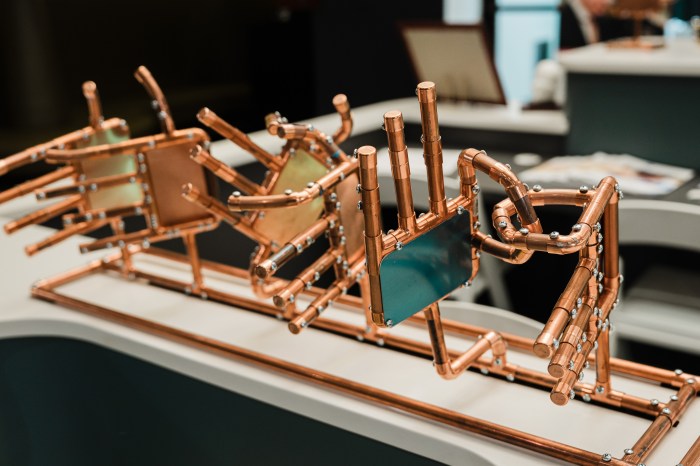
Walters first interviewed Smithdas on the Today show in 1967, highlighting his groundbreaking advocacy for DeafBlind Americans, and returned in 1998 to tell viewers he had changed her life and her understanding of communication. She later presented him with a Lifetime Achievement Award at the center’s 25th anniversary celebration.
Ruzenski, who interpreted for Smithdas’ wife Michelle during that 1998 interview, said the new atrium reflects the same spirit of connection the two icons shared.
“This space is all about connection,” she said. “It reminds us that accessibility is not only about physical environments. It’s about our mindset, our actions, and the way we choose to connect with one another.”
The redesigned atrium incorporates lighting, textures and wayfinding specifically intended to support independent navigation for DeafBlind visitors. The project took two years and included architectural work by Gensler and extensive feedback from HKNC staff and community members.
“This building was designed to be a DeafBlind space with intention,” said Ryan Odland, HKNC’s associate executive director. “The lighting, the sightlines, the textured surfaces, all of it helps individuals build a visual and tactile mind map so they know exactly where they are and where they’re going.”
Among the most significant changes: color-coded floor lighting, tactile navigation strips, improved acoustics and an open, lowered reception desk that replaces a previous glass barrier.
“Now people can walk in and immediately connect,” Odland said. “It sends a message: you belong here, and you can navigate this space independently.”
He said the most complex challenge was designing a space that works for people with widely varied levels of vision and hearing.
“We wanted this to be a model for what accessibility can be. And we’re proud of what we accomplished,” Odland said.
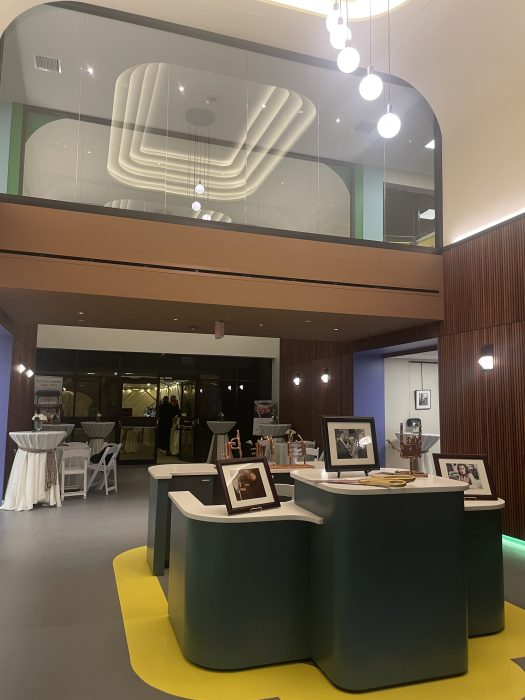
HKNC Executive Director John Filek called the atrium a “long overdue uplift” to a campus that has served DeafBlind Americans from across the country since 1976.
“Growing up as a CODA, it was always my dream to come here,” Filek said. “There’s nowhere else that provides this level of specialized training and empowerment.”
Sands Point Mayor Peter Forman presented an official proclamation, recognizing HKNC’s national role and its long relationship with the village.
“I can’t imagine the world before this existed,” Forman said. “This atrium is the flagship entrance that welcomes individuals who are DeafBlind to HKNC, and we’re honored to support the mission.”
Also in attendance were North Hempstead Town Supervisor Jennifer DeSena, Council Member Mariann Dalimonte, Port Washington North Mayor Robert Weitzner, Baxter Estates Mayor Nora Haagenson, who each presented a proclamation for the center.
Alumni shared emotional reflections on how HKNC had shaped their lives and futures.
Elizabeth Schmaltz of Minnesota said her world was “dark and confusing” before coming to HKNC after losing her vision.
“Once I came to Helen Keller National Center, everything transformed,” Schmaltz said. “This place changed my life. It brought me into the light. DeafBlind people can, we truly can.”
Dr. Francis Casale, a retired pastor and counselor, described meeting Smithdas in 1975 and realizing that he, too, could pursue higher education and meaningful work.
“He was amazing. I thought, ‘If he can do it, I can too,’” Casale said. “He showed us that DeafBlind people have opportunities, paths, and futures. He changed my life.”

Board chairman Larry Kinitsky said the atrium symbolizes both a physical renewal and “a reaffirmation of our mission.”
“This is the front door to a national effort that changes lives,” he said. “With this renovation, we honor the legacy of Barbara Walters and Dr. Smithdas, and we invest in a future where accessibility and connection are expectations, not aspirations.”
Guests closed the evening with a prosecco toast led by Ruzenski.
“To Bob and Barbara,” she said. “To opening these doors to a future of promise and possibility and to everyone who helped build this space, thank you.”
